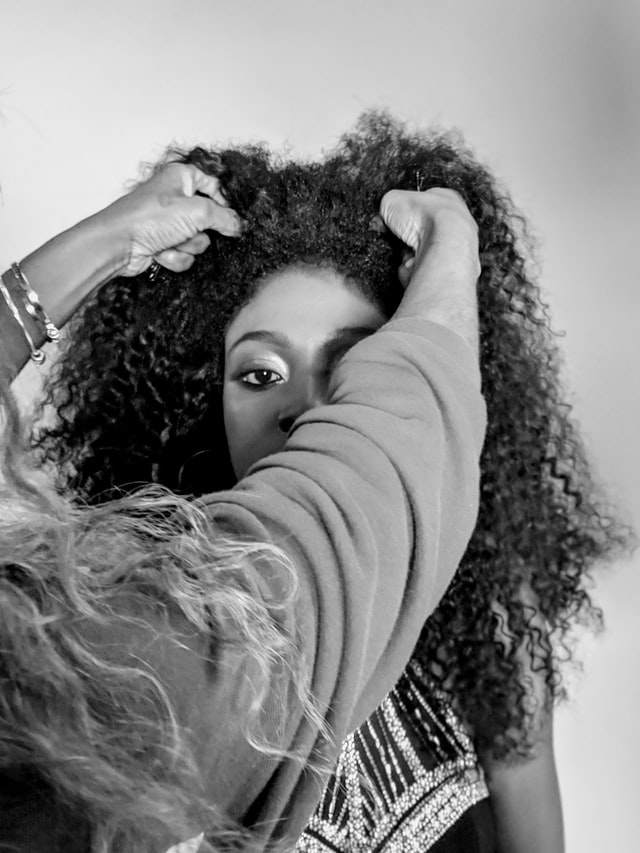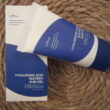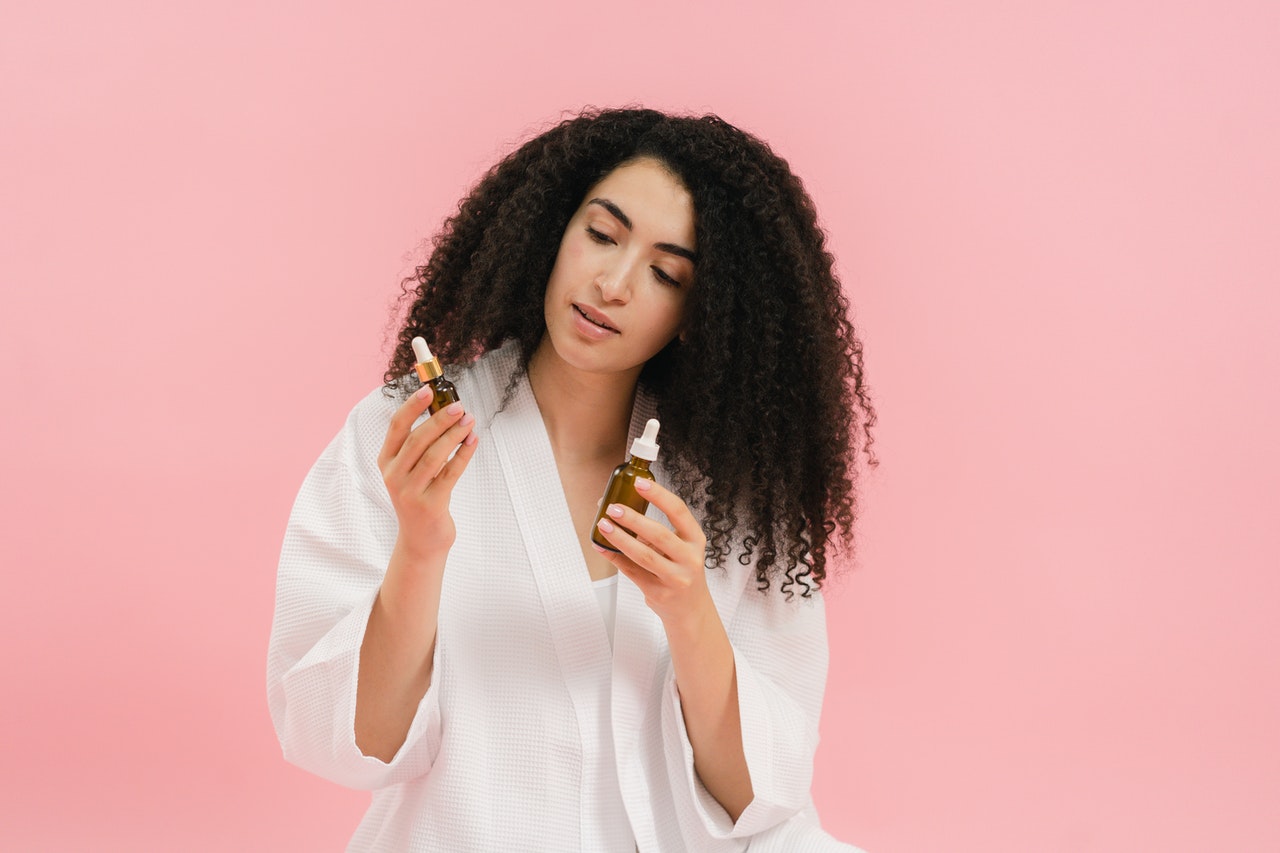Monsoon season might be a favorite for many with those rainy days in hot summer – seemingly a perfect day for hopeless romantics at heart. Love is in the air! You know what else is in the air? The intolerable humidity. (sorry, all the romantics out there) The humidity is what makes the monsoon hair go crazy and act all weird.
All of this, unfortunately, doesn’t bring joy to your hair that gets frizzy, grimy, and just out of control.
To help you through this crazy hair ordeal, we present the ultimate monsoon hair care tips.
But first, common problems that occur as a result of Monsoon Hair:

Dandruff
Dandruff issues get even worse in monsoon season. This happens because the humid weather makes the fungi (the main culprit) that lead to dandruff even more active. As a result, the scalp gets itchy and there is even more dandruff to deal with.
Thinning hair/ Hair fall
This one refers to hair fall mainly. It is very common for monsoon hair to be associated with hair fall. So, it comes as no surprise that hair fall increases throughout the monsoon season. Again, humidity in the air is the culprit for this too! See, your hair scalp has its own natural oils. What happens is that the humidity basically strips the scalp of its oils and your scalp becomes dry. (which causes the itchiness, it all works in a cycle) So, your hair becomes weaker and weaker, causing it to fall.
Scalp itchiness
All the bacteria and fungi on the scalp are even more encouraged in a rainy environment. This is one of the challenges of dealing with monsoon hair. They make the scalp itchy and sometimes even flaky. You might also develop painful bumps along the way.
Frizzy hair
Our hair is made of proteins – especially the one called keratin, the popular one. This is what gives the hair its structure. Ever seen how brands add keratin to their hair products? To make it look stronger in structure!
These hair proteins are fused together with a number of bonds. One of those bonds is referred to as a hydrogen bond. The problem with these bonds is that they are weak and they break very easily. Once this happens, the hair structure gets messed up and as a result – you guessed it – you get frizz in your hair.
Finally, the 6 Top Monsoon Hair tips

#1: Wash your hair properly
This seems like a no-brainer, but hear me out. Your hair gets even more sweaty and sticky during the monsoon season. You especially need to wash your hair on a rainy day to get rid of all the rainwater that is drenched in your scalp. Rainwater is acidic, the more it stays in your hair, the more damage it can do to the pH balance of your scalp. This one is the fundamental one among the tips for monsoon hair.
Ideally, choose an antibacterial, mild shampoo that will cleanse your hair without messing up the pH levels of your scalp. Look for the ones with biotin (aka vitamin B7), caffeine, pumpkin seed oil, ginseng to control hair fall. Products with tea tree oil can help you deal with extra oiliness as well.
#2: Dry your hair out (the right way)
After stepping out of the shower, don’t wait for a lifetime to dry your hair. Dry it asap. The longer you wait, the higher the risk of hair fall is getting. Get a microfiber towel when drying the monsoon hair, since it will absorb the water quickly.
PRO TIP: Don’t tie your hair when it is wet. It will lead to even more breakage and weak hair follicles. Try to follow all the rules, and don’t break them for the good of your hair.
#3: Oiling is good for monsoon hair
Although putting oil directly on your skin is controversial, it is different when it comes to hair, especially monsoon hair.
Regularly oiling your hair will make sure your hair doesn’t lose that much moisture when you wash it. It is almost a must for monsoon hair. Although oiling it too much can also put you in trouble, as your scalp tends to get oily throughout the monsoon season anyway.
The sweet spot is oiling it twice a week. Use almond oil or castor oil for the best results. It will nourish the hair and the scalp, and prevent hair frizz from forming.
DIY hair mask for Monsoon Hair

You will need:
- 1 tablespoon of coconut oil
- 2 tablespoons of castor oil
Mix them up in a mixing bowl and put it on your scalp, hair ends. Keep it on your hair for an hour or so. Some people keep it overnight, but in my opinion, it is too much. Wash it off later on with a mild shampoo.
Castor oil is antibacterial and antifungal, so it will fight the itchiness associated with monsoon hair. It will nourish the scalp and will prevent it from drying out. It also contains omega – 6 fatty acids that promote hair growth. Castor oil is also rich in antioxidants like vitamin E, which have the same effect on hair.
#4: Choose the right comb for monsoon hair
Ditch the small comb you are used to because it is monsoon season. Use wide-tooth combs and make sure it detangles your hair well. Don’t comb the hair while it is wet, since it is more prone to breakage while wet. Let it air dry on its own. Also, don’t share your comb with somebody else, because ew. Also, because, you know, fungal infections.
#5: Don’t forget hair conditioning
Choosing the right conditioner for monsoon hair can be even more important than choosing a shampoo. Conditioning your hair will solve the frizz and dandruff problems. It will add moisture and shine to your hair. I mean, who doesn’t like smooth and silky hair after conditioning? Make sure to choose one for your hair type.
#6: Follow a nutritious diet
Everything comes down to healthy eating habits and lifestyle changes. Your food choices directly relate to the health of your hair. Greasy, heavy foods with saturated fats will only worsen the situation of monsoon hair. I know, it is sad since most of us are drawn to carbs, fatty comfort foods in monsoon season.
Eat foods rich in fiber like spinach, nuts, berries. Don’t forget about proteins and healthy fats like chicken, avocado, leafy vegetables, and fruits packed with antioxidants like Vitamin E, vitamin A, potassium, and so on.
If you have sugar or carb cravings in monsoon season (which, let’s admit, we all do), try to keep it in moderation. Counting calories seems like punishment, don’t count them, just be mindful of how much you actually eat. Slow progress is still progress!
CHECK OUT our blog post on healthy skin habits: 10 Healthy Skincare Habits To Live By
Bonus tip: Use head accessories in Monsoon season
Go closet scavenger hunting. Seriously. See what accessories you have that can be used on your head during monsoon hair to protect yourself from rain all day. Umbrellas, scarves, head wraps, shawls… you name it! Just be creative with it. You can easily turn some old scarves into fashionable headbands. It will also look very cool!
To conclude
Monsoon season has so much to offer, don’t let the monsoon hair ruin it for you. It can certainly take a toll on your hair, but by following these tips, you can minimize the possible hair damage overall. Say no to bad hair days and yes to monsoon hair!






